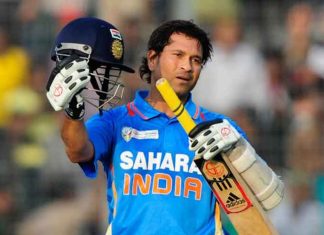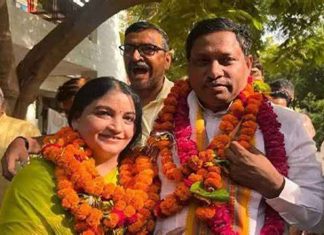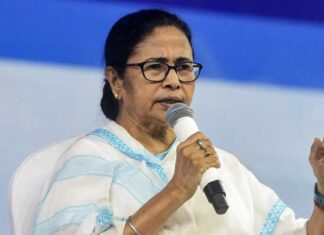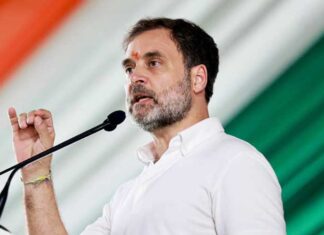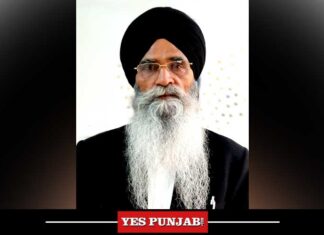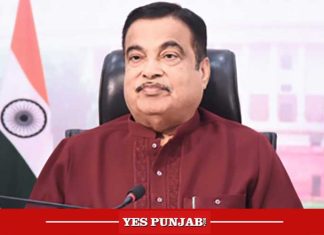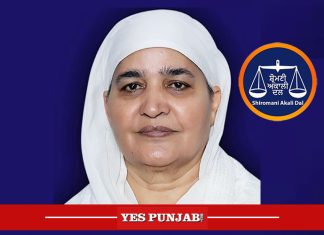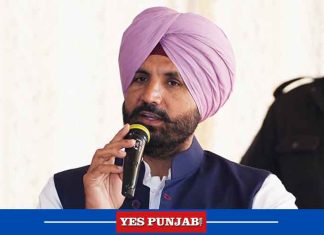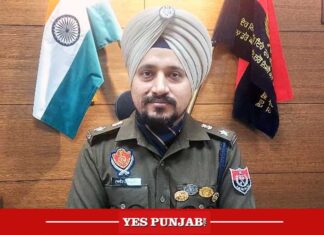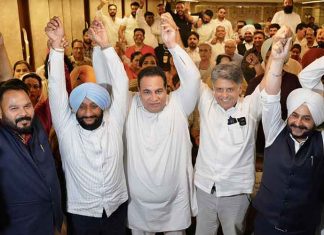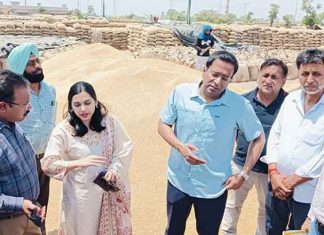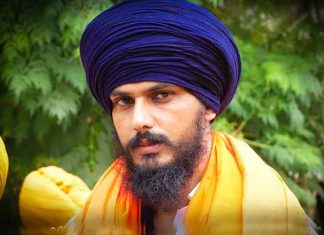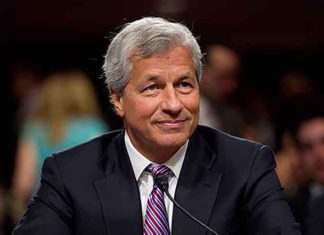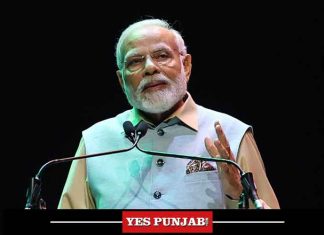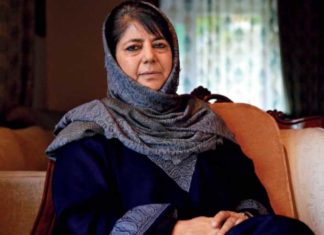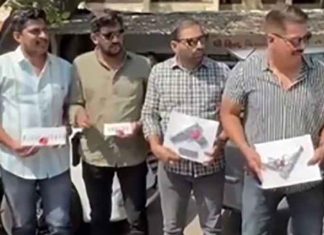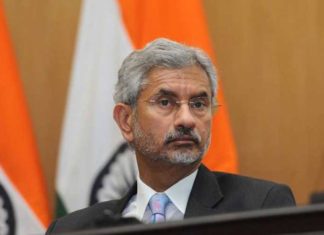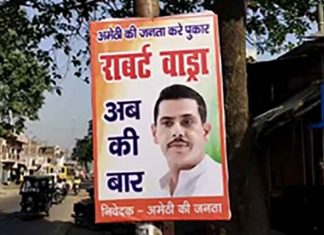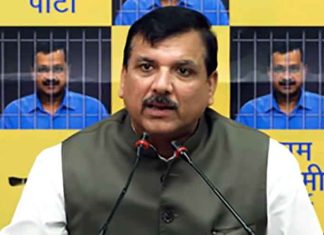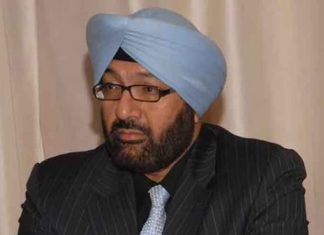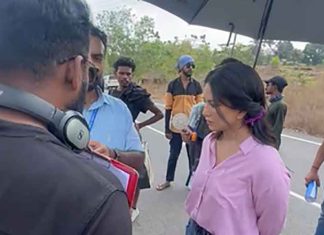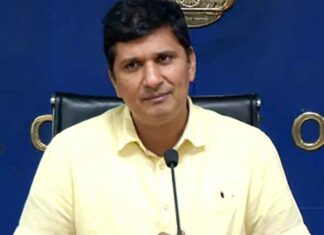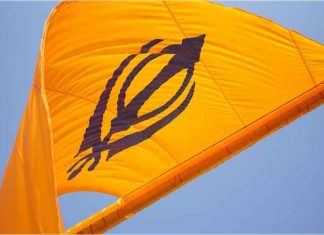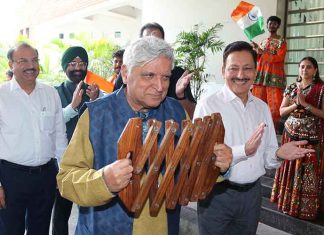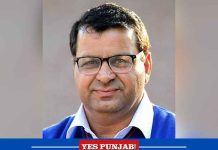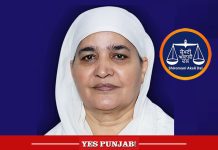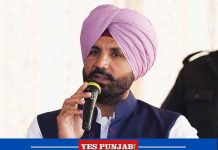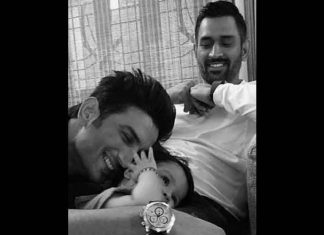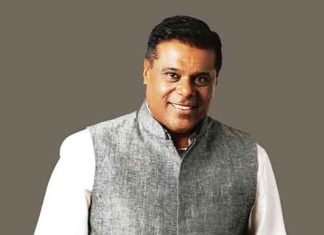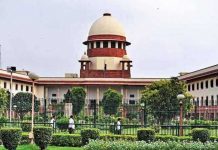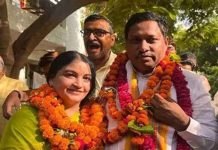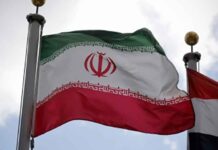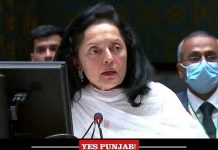On September 4, 1965, I accompanied a marriage party of a dear friend to Kotkapura in Faridkot district and on September 5, when we were returning to Ludhiana, we saw huge military convoys moving towards Ferozepur side. The trouble in Kashmir had already started and as we reached Ludhiana in the evening, there was a black out in the town.
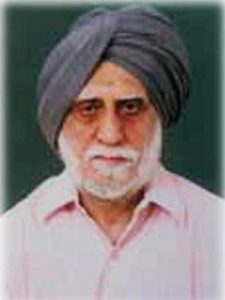 The Pakistani bombers had made first sorty at the Halwara airport of the IAF. Thus there was beginning of war between India and Pakistan on Western Front. The Pakistani planes dropped some paratroppers near Halwara Airforce station. But they could not be dropped at the target.
The Pakistani bombers had made first sorty at the Halwara airport of the IAF. Thus there was beginning of war between India and Pakistan on Western Front. The Pakistani planes dropped some paratroppers near Halwara Airforce station. But they could not be dropped at the target.
A press party from Ludhiana left for the villages around Halwara Airforce station to see the Pakistani Paratroopers who had been dropped. In the vicinity of Halwara station. While the press party was passing through Halwara station, there was alarm singalling air raid by the Pakistani bombers. Our vehicle came to a halt immediately and we all took shelter in the trenches constructed along the road.
Finally we reached Rajoana village which is located on the backside of the Halwara station. The villagers had caught hold of the paratroopers who were dropped by Pakistani planes. The villagers narrated a story of capture of a paratrooper by a young man in his teens.
The Pakistan paratroopers had fallen in the sugarcane fields and the boy who was grazing the cattle immediately pounced upon the paratrooper and beat him up with a bucket (water balti) and smashed his head. He ultimately died. In all eighteen paratroopers were caught by the villagers and the police authorities who were on patrol duty in the area under the direct supervision of Harjeet Singh Ahluwalia, district police chief of Ludhiana. All the paratroopers were taken to Jagraon police station. The press party was also taken to Jagraon police station and we met some of them in the lock up. The paratroopers were very fit physically and they had the most sophisticated and brand new parachutes and other weapons with the marking of ‘made in USA’.
The target of the paratroopers was the Indian oil depot from where the Halwara station planes were getting fuel. But they could not cause any harm to the oil depot as they could not be dropped at their target. This oil depot was later targeted by the militants during the militancy in Punjab and was put on fire and the Indian Oil Corporation had to shut this depot.
The Pakistani bombers had made a number of sorties on the Halwara air base but could not do any harm because of the alertness of the IAF. The Pakistani bombers even dropped napalm bombs which fell in the periphery of the air base. I visited some of the villages and found at village Sudhar a huge crater caused by one of the Napalm bomb. The explosion of the bomb had even brought water in the crater on the surface.
Ludhiana town had a ammunition depot of the army at the time of the war and there was no air defence for the same at the time of the war. One Col. Sewa Ram who was from the Air defence unit met me and later came to our house also. His daughter was studying with my younger sister. He was deputed to install ack ack guns near the ammunition depot to protect the same. The ack ack guns were installed in Sherpur chowk and one night there was trial of the guns. As the ack ack guns were fired for trial, the sky was full of colourful fires and the residents thought Ludhiana town had been attacked by the Pakistani planes. The residents came out of their houses under fear in the black-out. The police had to work very hard to convince that there was no attack or any Pakistan air raid and ‘go inside your houses’.
During a tour of the villages around Halwara station, I found Harjeet Singh Ahluwalia, the district police chief moving with a 303 gun and assuring the villagers of their safety. Harjeet Singh was district police of Ludhiana for six years and retired as IG police. During the war period, I tried to contact the officer commanding the Halwara station for his comments, but he said he would have to get clearance from the headquarters and could not meet him.
During 1971 Indo-Pak war I happened to visit Halwara station with the then Deputy Commissioner Ajit Singh Chatha who introduced me to the Air Officer Commanding Air Commodore Gole and I made more than half a dozen trips to the air base during the war. Halwara Airbase was fully strengthened when 1971 war broke out and on the very first day-December 3, 1971 three Pakistani bombers came to attack and one was gunned down by the anti-air attack missile. The plane was completely destroyed and even the body of the Pakistani pilot was crushed into pieces. The villagers around the air base told me that as the missile fired from the air base, it followed the Pakistani plane and did not leave it until it was destroyed. As one villager explained in chaste Punjabi, ‘Pakistani Jahaz agay agay te lal lot peeche pechhe ate akhir jahaz sut hi laya’.
During my visit to the air base, I would prepare my news story and leave a copy of the same for clearance from the headquarters. It was in the evening the authorities of Halwara base would clear my story on phone. After the first attempt by the Pakistani bombers from Halwara had been making sorties to Sargodha, Lahore and Multan and some other places. I saw picture of the damage caused at Lahore railway station and other vital installations. During both wars, there was lot of enthusiasm among the residents to serve the army personnel passing through special trains from Ludhiana railway station. Huge size canteens were setup at the railway station to serve the armymen.
After the ceasefire, a civic reception was arranged for Lt. General J S Dhillon who was commanding the army in the western front.
In 1971 December when the war ended and Bangladesh was created, Rotary club Ludhiana honoured Air Chief Marshal P C Lall who was heading the Air Force during the war and he also laid the foundation stone of the Rotary Bhawan in Sarabha Nagar residential colony.
I had an exclusive interview with Air Chief Marshal P C Lall during his visit to Ludhiana rotary function.
In will be of interest of the readers and the general public that the foundation stone of the Rotary Bhawan which was laid by Air Chief Marshal P C Lall was replaced by the foundation stone of the Deputy Commissioner Ludhiana. This was done to please the Deputy Commissioner by an office bearer of the rotary club who is dead now.
KS Chawla is a veteran journalist.
He can be contacted at : 9988644244
[email protected]
[email protected]
August 30, 2015




